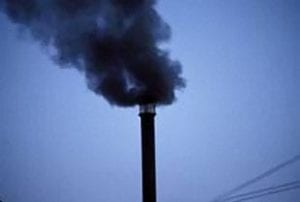According to the World Health Organization (WHO), the health dangers presented by air pollution are far larger than previously thought.
This is according to the Climate and Clean Air Coalition to Reduce Short-Lived Climate Pollutants (CCAC), who renewed its call for rapid action to reduce some of the greatest hazards to human health on 7 April 2013. According to the World Health Organization (WHO), the health dangers presented by air pollution are far larger than previously thought. “Air pollution is becoming one of the biggest public health issues we have in front of us at the moment,” Dr. Maria Neira, Director of Public Health and Environment at WHO, said at a recent CCAC meeting. “The estimations we have now tell us there are 3.5 million premature deaths every year caused by household air pollution, and 3.3 million deaths every year caused by outdoor air pollution.” Indoor air pollution alone is the leading risk factor for burden of disease (years of life lost combined with years lived at less than full health) in South Asia. It is ranked second in Eastern, Central and Western Sub-Saharan Africa, and third in South East Asia. Ground-level ozone pollution is estimated to cause an additional 200 thousand premature deaths annually. The CCAC, whose partners include some of the world’s leading governments and advocates for a healthier environment, targets so-called short-lived climate pollutants, or SLCPs, as major culprits in the damage to health, as well as crop loss and climate change, caused by air pollution. SLCPs that are particularly harmful to human health are released through sources ranging from diesel engine exhaust, to smoke and soot from inefficient cook stoves and traditional brick production, to leakage and flaring from oil and natural gas production, to emissions from solid waste disposal.Fast action on SLCPs, which the CCAC believes is possible through existing technologies and national policies, has the potential to reduce dramatically the number of deaths each year from air pollution.
The CCAC has launched several initiatives to combat SLCPs. With an estimated 19 per cent of global black carbon emissions worldwide coming from the transportation sector, and with a relatively large share coming from diesel vehicles, efforts to lower black carbon emissions from heavy-duty vehicles and engines are receiving particularly strong attention from the Coalition. Efforts to reduce pollution from transportation include pushing for widespread reduction of the sulfur content in fuels. A World Bank study** shows that, when combined with cleaner vehicles, adoption of low-sulfur fuel would result in annual savings in health costs of US$6 billion in Sub-Saharan Africa alone. Efforts to lower black carbon emissions also include creation of a public-private collaboration called the Green Goods Movement Supply Chain Partnerships, which aims to accelerate the adoption of emission-reducing and fuel-saving technologies. The CCAC is also working with city governments and stakeholders to implement so-called City Action Plans to reduce diesel emissions in urban areas. The CCAC has launched efforts to reduce black carbon and other pollutants from brick production through adoption of modern technologies, which can lower pollutant emissions between 10 and 50 per cent. A major source of indoor air pollution is smoke from cook stoves, which emits carbon monoxide and other pollutants at levels up to 100 times higher than the recommended limits set by WHO. The government of Bangladesh, a CCAC founding partner, recently announced a major initiative to increase the distribution of clean cook stoves in the country. The Climate and Clean Air Coalition to Reduce Short Lived Climate Pollutants is a partnership of governments, intergovernmental organizations, the private sector, the environmental community, and other members of civil society. The Coalition is government-led but is highly cooperative and voluntary. Launched by six countries and the UN Environment Programme in February 2012, it now consists of 60 state partners and other key international institutions and organizations.







